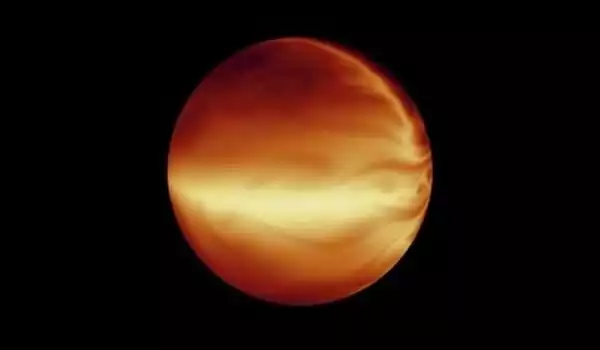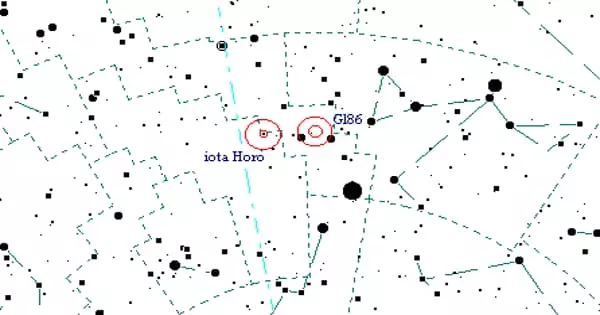Multiple star systems are relatively prevalent in our universe, with estimates indicating that almost half of all stars are a part of one. However, discovering a planet in such a system is unusual. Astronomers are constantly on the lookout for exoplanets, or worlds that orbit other stars. They achieve this in a variety of ways, including studying a star and noting if its light dims. If it does, it could mean that a planet is passing, or transiting, the star.
The finding of a transiting hot Jupiter in an unique triple-star system has been revealed by an international team of scientists. The KELT-4Ab gas giant was identified by astronomers using data from the Kilodegree Extremely Little Telescope (KELT). The team, led by Dr. Jason Eastman from the Harvard-Smithsonian Center for Astrophysics, found that the planet has a mass of 0.9 Jupiter and a diameter of 1.7 Jupiter.
Researchers at the Harvard-Smithsonian Center for Astrophysics in the United States discovered that a binary system previously assumed to be a single star was actually a pair of stars orbiting one another and is part of the triple-star system. Known planets with three stars in their sky are uncommon – the new finding is only the fourth and closest one yet, giving for a clearer view than previously allowed, according to researchers.
KELT-4Ab is around one-and-a-half times the size of Jupiter, our solar system’s biggest planet. In terms of size, KELT-4Ab is qualitatively similar to WASP-79b and WASP-94Ab, which have slightly larger planets orbiting slightly fainter stars.
Dr. Jason Eastman
KELT-4Ab is around one-and-a-half times the size of Jupiter, our solar system’s biggest planet. Every three days, it orbits the system’s primary star. However, the rest of the system is much larger: the other two stars orbit one another once every 30 years, and the main star once every 4,000 years.
“In terms of size, KELT-4Ab is qualitatively similar to WASP-79b and WASP-94Ab, which have slightly larger planets orbiting slightly fainter stars,” the researchers wrote.
According to the team, KELT-4Ab is 685 light-years away. Every three days, the planet orbits KELT-4A, the brightest star in the hierarchical triple stellar system KELT-4 (also known as HIP 51260, TYC 1973 954 1, and WISE J102815.04+253423.7).
“KELT-4Ab, together with WASP-12b, HAT-P-8b, and Kepler-444b, is only the fourth known transiting planet in a hierarchical triple star system,” Dr. Eastman and co-authors wrote. “KELT-4A is the second brightest host of all these systems, the brightest host of a hot Jupiter, and hence a valuable find for prolonged follow-up of inflated planets, hierarchical structures, and hot Jupiter migration,” the researchers write.
The KELT-4 triple-star system also contains two fainter stars, KELT-4B and KELT-4C, which are known collectively as KELT-4BC. Every 29 years, the twin stars KELT-4B and KELT-4C orbit each other. After that, the pair will orbit KELT-4A once every 3,780 years.

The anticipated distance between KELT-4A and KELT-4BC is about 328 astronomical units (AU), while the distance between KELT-4B and KELT-4C is barely 10 AU. “The existence of KELT-4Ab within a hierarchical triple and its vicinity to Earth presents a unique opportunity for dynamical research with ongoing monitoring using high-resolution imagery and precision radial velocities,” the astronomers said.
KELT discovered a periodic dimming of the star, a drop in light every three days that lasted roughly four hours. They confirmed it by using different telescopes to follow up on these observations: they had discovered a planet around the star.
The planet, KELT-4Ab, is a little different from what we have in our own solar system. As I explained in a recent piece, transits cannot provide information about the planet’s mass, but high-resolution spectra can. The team did precisely that and discovered that the planet has a mass that is roughly 90 percent that of Jupiter.
The exoplanet was identified by transit and is a Hot Jupiter planet orbiting KELT-4, one of three stars in a triple star system. It is the fourth planet discovered in this type of system. Researchers predict KELT-4A to be valuable in understanding more about inflated planets because it is the brightest host (V~10) of a Hot Jupiter in a hierarchical triple stellar system discovered so far.
Because Jupiter-sized exoplanets are easier to detect, they have been detected in greater numbers. Astronomers once thought that most of these huge gas planets formed in distant orbits around their host stars, similar to how Jupiter formed in our solar system. However, in 1995, astronomers discovered the first “hot Jupiter” – a gas giant in a relatively tight orbit to its star — compelling them to reevaluate their views.
















